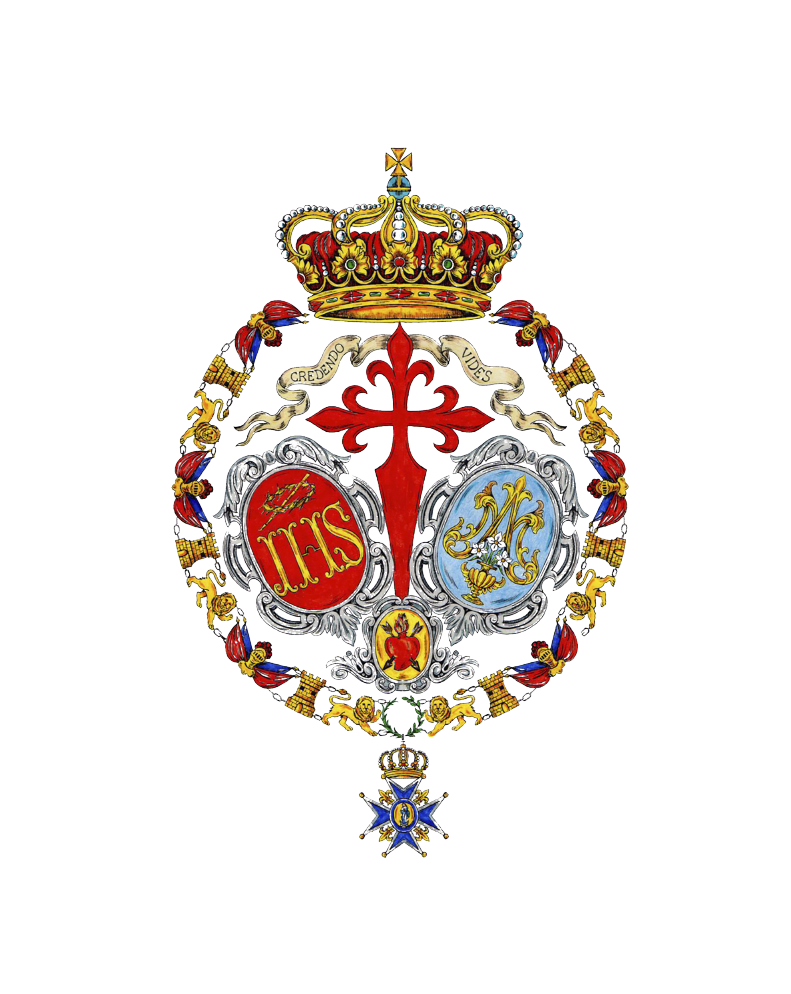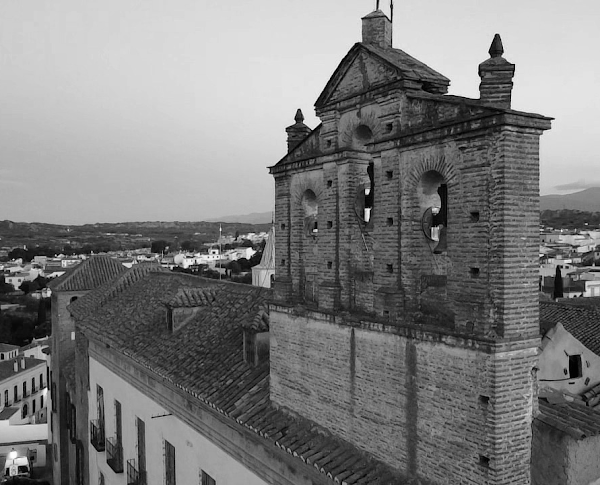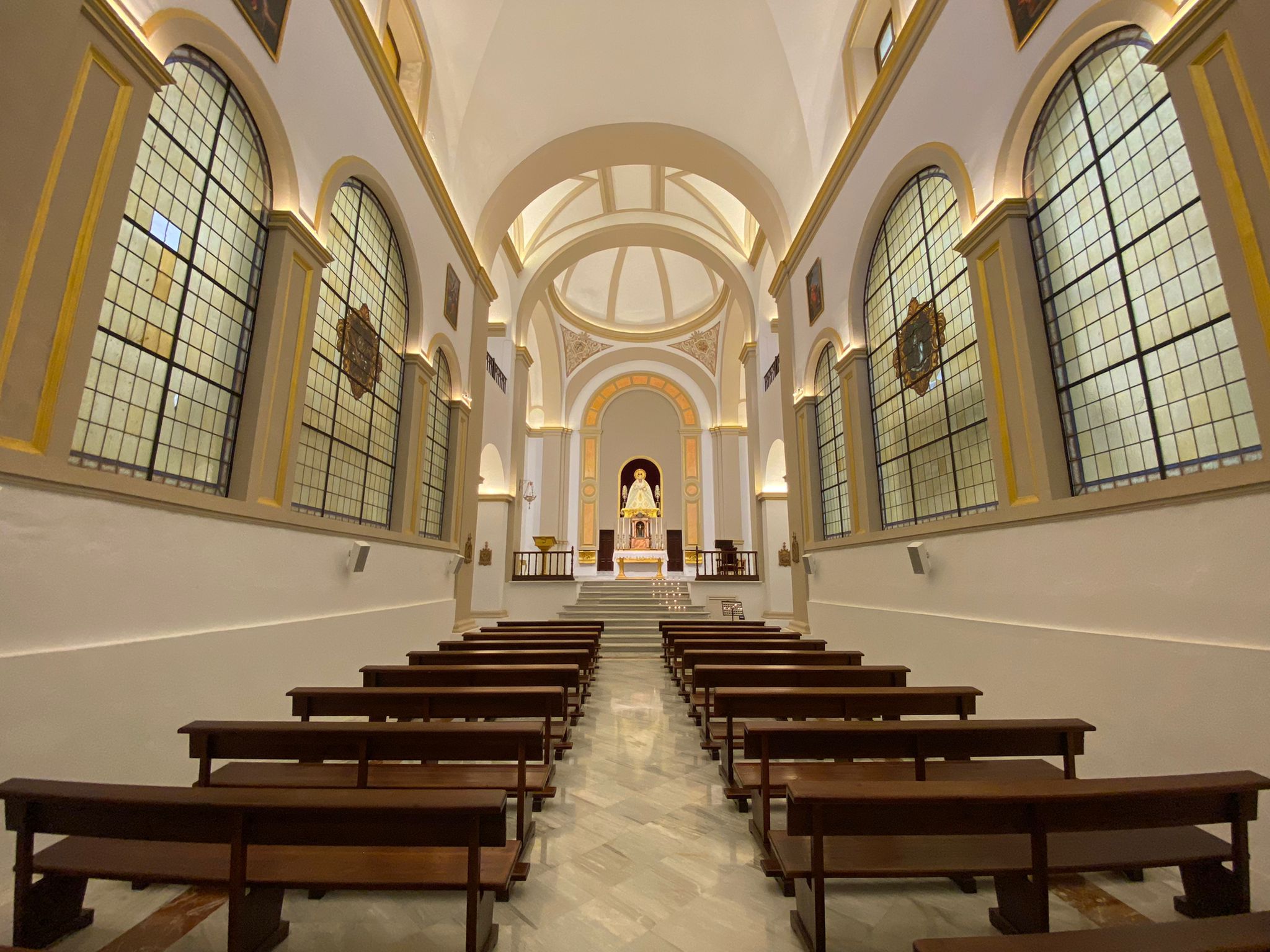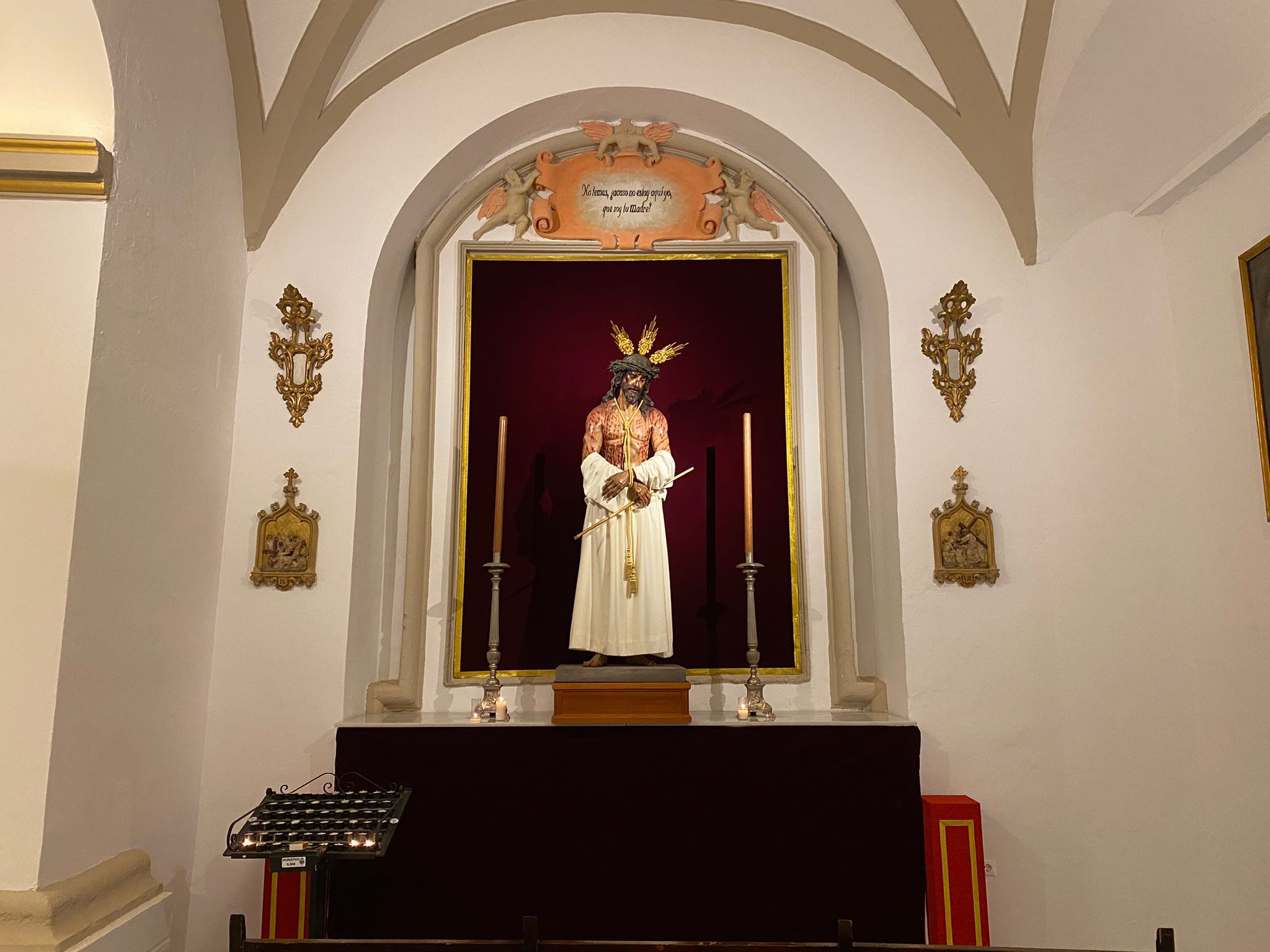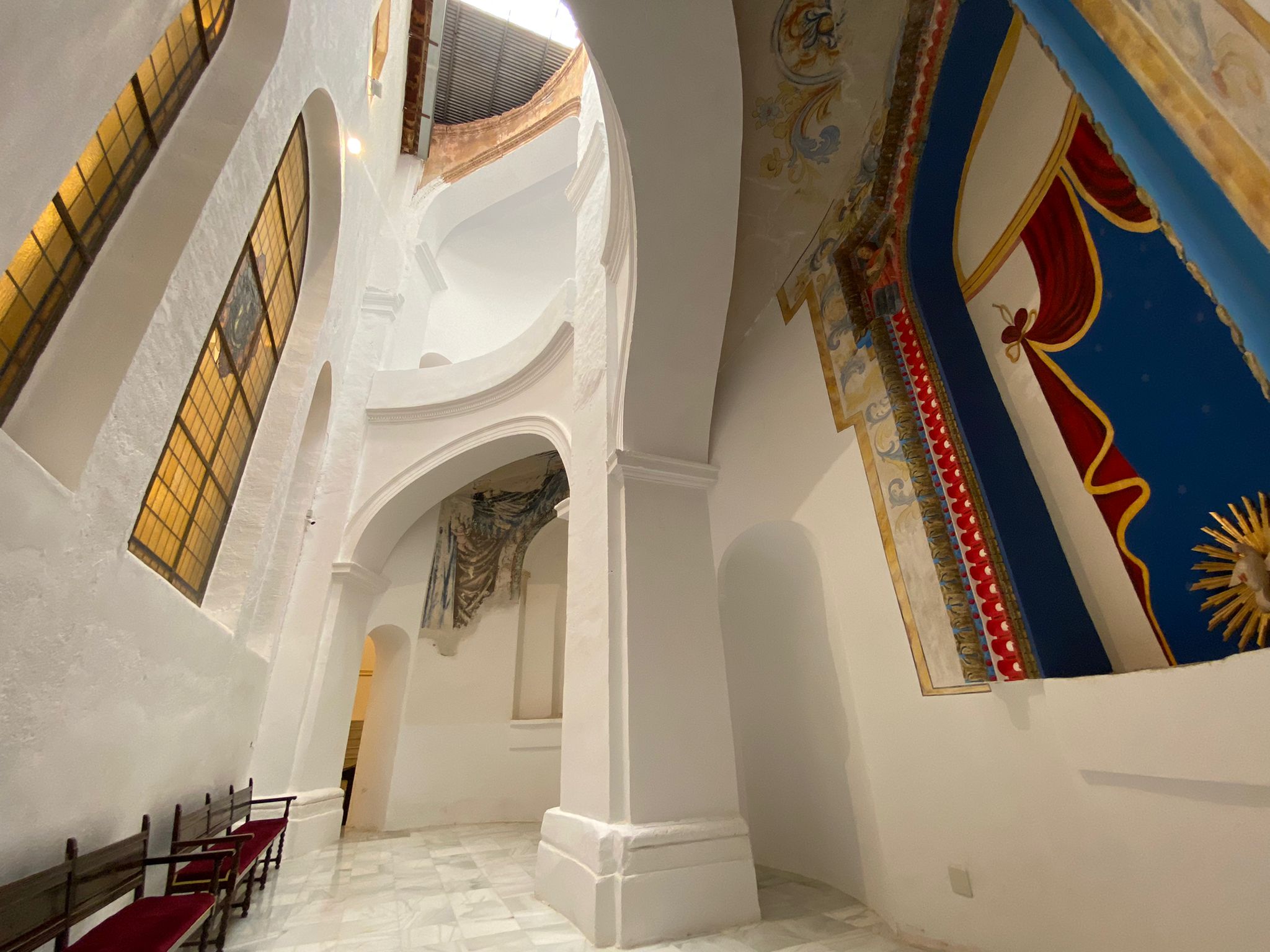The Venerable Archconfraternity of the Immaculate Conception and the Royal Very Illustrious and Fervent Brotherhood of Our Father Jesus of the Sovereign Power ecce-homo and Holy Mary of Tears, welcomes you to this Church of Santa Maria of Tears, and we invite you through this tour to know both the fascinating history of almost 400 years of this building, which is one of the emblems of this thousand-year-old city, as well as to know the Brotherhood of Tears, its heritage and its penance station the afternoon-night of each Holy Thursday .
Before starting this adventure that will last about 30 minutes, we ask you to remain silent as this Church is a place of Christian worship dedicated to the miraculous Virgin of Tears, and where Jesus is worshiped in the sacrament in the Tabernacle. You are in a very spiritual space, so we also invite you to pray or ask for the graces that you want to achieve. If you wish to have a gesture of piety in the form of light with any of the devotional images that are in the temple, you can do it through the lamps or with a candle that can be purchased at the beginning of the Church.
The history of this Church was born in the vicinity of the old Medinat Wadiash at the dawn of 1594 under the pontificate of don Juan Fonseca y Guzman, the convent of San Agustín was founded in the building next to the church, being a century later in full baroque this temple was built that would give spiritual service to the monastery, whose plan is of extraordinary merit that competes with architectural beauty, highlights prodigious basilica plan, imposing facade and its peculiar belfry-shaped bell tower that supports three bells that can be seen and heard from any point of the city.
During the XVII-XVIII century it was the time of greatest splendor of the Church, since in addition to founding notable brotherhoods, huge amounts of works of art were acquired in all areas, architecture, painting and sculpture, but the fate of the building changed in the nineteenth century with the decree of José Napoleon with the dissolution of the convents in the middle of the French revolution, where this temple also became an artillery headquarters, which meant the loss of all its heritage as well as being structurally affected with the breakage of the central panel of the building that allowed the cannons to pass towards the citadel.
Once the conflict was over, the Augustinian friars on the ruins recovered the convent with the Church but with such a small number of friars that after a few months the Order would be extinguished in the city with the death of the last of them, the venerable father teacher and doctor in theology Fray Felipe Antonio Lanzas. That he died while offering the holy mass alone on the altar of the main altar.
In 1836, with the exclaustration decrees of Mendizábal, the architectural complex was put up for public auction, increasing its deterioration. and It is not until 1851 with the signing of the concordat when the Church recovers the building turning it into the conciliar seminary of San Torcuato, giving fruit to Illustrious clergy who were ordained in this Church and that we will meet in later exhibitions. Although the Church was abandoned during the 1970s because it was in technical ruin, since the building did not withstand the damage caused by the Spanish Civil War (1936-1939) where, administered by the UGT, it served as a general food store for the civilian population. , already with the detachment of the great central dome among other great structural losses, forced the Bishop of Guadix Don Rafael Alvarezlara, once the civil war was over specifically in 1949, to completely modify the structure of the Church.
Building the peculiarity of “one Church within another”. Until in 1999, under the pontificate of Bishop Don Juan Garcia-Santa Cruz, the Brotherhood of Tears from the parish of Santiago Apóstol de Guadix, signed an agreement with the bishopric of Guadix for the transfer of this Church of San Agustin to the in order to reopen it for the worship for which it was built. The new Church of Santa María de las Lágrimas, with a great effort and the altruistic work of its brothers, is recovering the primitive church, with the exception of the loss of the great central dome, but saving the old walls that supported it and restoring its mural paintings from the 17th century that we can discover in subsequent exhibitions. We invite you to participate in the second exhibition, where we will show you the true face of Jesus of Nazareth and the Eccehomo chapel.
